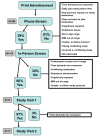Comparative cognitive and subjective side effects of immediate-release oxycodone in healthy middle-aged and older adults
- PMID: 19729346
- PMCID: PMC2757528
- DOI: 10.1016/j.jpain.2009.03.017
Comparative cognitive and subjective side effects of immediate-release oxycodone in healthy middle-aged and older adults
Abstract
This study measured the objective and subjective neurocognitive effects of a single 10-mg dose of immediate-release oxycodone in healthy, older (> 65 years), and middle-aged (35 to 55 years) adults who were not suffering from chronic or significant daily pain. Seventy-one participants completed 2 separate study days and were blind to medication condition (placebo, 10-mg oxycodone). Plasma oxycodone concentration peaked between 60 and 90 minutes postdose (P < .01) and pupil size, an indication of physiological effects of the medication, peaked at approximately 90 to 120 minutes postdose (P < .01). Significant declines in simple and sustained attention, working memory, and verbal memory were observed at 1 hour postdose compared to baseline for both age groups with a trend toward return to baseline by 5 hours postdose. For almost all cognitive measures, there were no medication by age-interaction effects, which indicates that the 2 age groups exhibited similar responses to the medication challenge. This study suggests that for healthy older adults who are not suffering from chronic pain, neurocognitive and pharmacodynamic changes in response to a 10-mg dose of immediate-release oxycodone are similar to those observed for middle-aged adults.
Perspective: Study findings indicate that the metabolism, neurocognitive effects, and physical side effects of oral oxycodone are similar for healthy middle-aged and older adults. Therefore, clinicians should not avoid prescribing oral opioids to older adults based on the belief that older adults are at higher risk for side effects than younger adults.
Figures



References
-
- Alladi S, Arnold R, Mitchell J, Nestor PJ, Hodges JR. Mild cognitive impairment: applicability of research criteria in a memory clinic and characterization of cognitive profile. Psychol Med. 2006;36:507–515. - PubMed
-
- American Geriatrics Society. The management of persistent pain in older persons. Journal of the American Geriatrics Society. 2002;50:S205–224. - PubMed
-
- American Pain Society. Guideline for the Management of Pain in Osteoarthritis, Rheumatoid Arthritis and Juvenile Chronic Arthritis. American Pain Society; Glenview, IL: 2002.
-
- Andersson C, Lindau M, Almkvist O, Engfeldt P, Johansson SE, Eriksdotter Jonhagen M. Identifying patients at high and low risk of cognitive decline using Rey Auditory Verbal Learning Test among middle-aged memory clinic outpatients. Dement Geriatr Cogn Disord. 2006;21:251–259. - PubMed
-
- Balthazar ML, Martinelli JE, Cendes F, Damasceno BP. Lexical semantic memory in amnestic mild cognitive impairment and mild Alzheimer’s disease. Arq Neuropsiquiatr. 2007;65:619–622. - PubMed
Publication types
MeSH terms
Substances
Grants and funding
LinkOut - more resources
Full Text Sources
Medical

